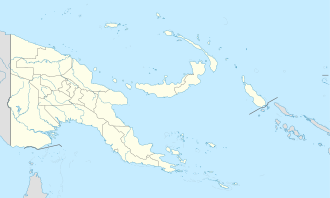 ISS image of Pocklington Reef | |
| Geography | |
|---|---|
| Location | Solomon Sea |
| Coordinates | 10°48′44″S155°44′18″E / 10.81222°S 155.73833°E [1] |
| Type | Reef |
| Archipelago | Louisiade Archipelago |
| Adjacent to | Solomon Sea |
| Total islands | 2 inhabited on Bentley Group |
| Major islands |
|
| Area | 0.01 km2 (0.0039 sq mi) |
| Highest elevation | 1 m (3 ft) |
| Administration | |
| Province | Milne Bay |
| District | Samarai-Murua District |
| LLG | Yaleyamba Rural Local Level Government Area |
| Demographics | |
| Population | 0 (2014) |
| Pop. density | 0/km2 (0/sq mi) |
| Additional information | |
| Time zone | |
| ISO code | PG-MBA |
| Official website | www |
Pocklington Reef is a coral reef and a mostly submerged atoll in the far southeast of Papua New Guinea.
Contents
It is 162.4 km (100.9 mi) from the closest island, Loa Boloba, which is a tiny coral islet within the fringing reef near Cape Deliverance, the south east point of Rossel Island (Yela) in the Louisiade Archipelago, and belongs to Milne Bay province, Samarai-Murua District, Yaleyamba Rural Local Level Government Area.
Pocklington Reef sits on top of Pocklington Ridge, which extends north-east from Rossel Island. The reef is 32 km (20 mi) long and up to 4 km (2.5 mi) wide. Its longer axis is north-east-south-west. The rim of the reef encloses a deep lagoon. The northern rim reaches closer to the surface, and several above water rocks with heights between 0.9 and 3 m (2 ft 11 in and 9 ft 10 in) high lie along its length. There is a small spit of sand about the size of a football field (less than one hectare or 2.5 acres) at the north-east end.
It is isolated from other reef systems by deep water and relatively pristine.
Before Papua New Guinea achieved sovereignty in 1975 it was decided Pocklington Reef should be part of the new nation. [2]

